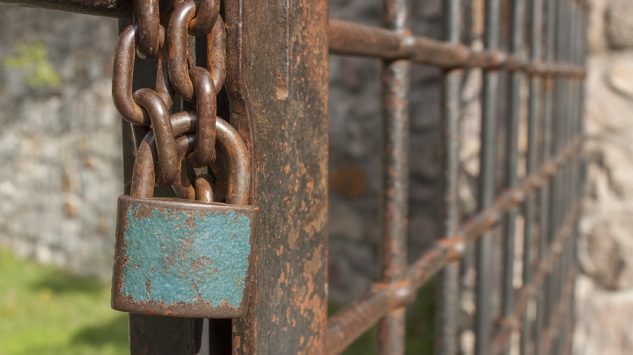Issue Briefs

The Tragedy of the Slave Trade
Michael Binyon
November 15, 2017
Locked in a box for eight years, the skeletons of more than 320 African captives liberated from 19th century slave ships are to be reburied on the remote island of St Helena, the site of the largest slave graveyard in the world. They could prove a vital link in tracing the history of slavery from Africa to the Americas, and are likely to provoke enormous interest in the United States.
Dead slaves
The skeletons were discovered when work began on the access road to the new airport on the small British territory in the South Atlantic. The excavations uncovered mass graves of slaves brought to the island when Britain’s Royal Navy intercepted Portuguese slave ships. Many of the men shackled in the fetid holds were already dead. Those still surviving were given food, shelter and medical help, while the corpses of those being transported in terrible conditions were quickly buried in mass graves to avoid disease.
The bones were carefully removed and documented when the unmarked graves were discovered, and the artifacts found with them – jewelry, coins, beads, shackles and manacles – were sent to the museum of slavery in Liverpool, the port in northern England where many slave ships set out for Africa. These artifacts arrived back on the island last month, where they will be displayed in the main museum. It is reckoned that St Helena holds the skeletons of more than 9,000 African captives in two sites near the waterfront. Altogether some 30,000 liberated Africans were brought to the island.
Commemorating the fight against the slave trade
After long debate, the executive council of the British overseas territory decided last week that the bones, kept in a storeroom next to the island prison, should be reburied as soon as possible in the valley where they were found. At present, fuel for the new airport is held there in storage tanks and much clearance work needs to be done first. A committee has been set up to look at the design for a monument and how St Helena and the navy should commemorate the largest humanitarian rescue operation during the 19th century, which lasted almost 40 years.
The issue has become very sensitive on the island. A key question is whether there should be any religious funerals or Christian burials. Few, if any, of the captives were Christian, however. Should there be a mass grave or individual coffins? Also, what should be the size, cost and inscription on the memorial? And should any African nations be represented at the reburial?
What part of Africa did the slaves come from?
At the time, no one could tell where the slaves were seized. But DNA and bone analysis of the skeletons, as well as isotope analysis to trace the signature left in the bones by groundwater, can now tell what the captives ate, thus pinpointing the local vegetation and therefore the regions where they were captured. Most of the slaves were taken anywhere along the coast from what is now Sierra Leone to Angola.
The captives were on their way to slave markets in the Caribbean and Brazil, where slavery lasted longer than elsewhere. Few were still shipped to America, where the issue of slavery sparked the civil war in 1860.
Parliament abolished slavery throughout the British Empire in 1833, although Britain itself had been a main slave trader. An exception was made for the East India Company, which then governed St Helena, although abolition was enforced there also in 1843. The Royal Navy, on patrol out of St Helena, then the main naval base in the south Atlantic, was zealous in trying to stop the slave trade.
Freed slaves sent to the Caribbean or America
Captured ships were forced into Jamestown, the capital, and the slavers, mostly Portuguese, were put on trial. Those captives still alive could not be sent home; however, as no one spoke their language and they could not say where they had come from. Some remained on the island, but most were sent on as freemen to work in the Caribbean. A number made their way on to America, not as slaves but as cheap labour and it is thought some were active in helping others to escape slavery in the south.
What scientists discovered
British archaeologists have done a great deal of work on the remains in the past decade, establishing the age, sex and general condition of the slaves who died. Most were young, between the ages of 15 and 30, but there were also young children buried with their mothers. The majority were male, though some females were captured in order to breed more slaves. Some showed tribal markings, particularly those with filed teeth. Many had suffered from diseases which left marks on their bones, and some showed clear signs of injury that might have been inflicted on them when they were captured.
The issue has sparked huge interest in the United States, especially as some of the liberated captives eventually made their way there. A researcher from Howard University, the leading black university in Washington, DC, will arrive on St Helena soon for further research.
The tragedy of the slave trade
Until recently, little was known about the slave graveyards. The colonial authorities tried to keep them far from the population so as not to spread fears of disease. The main excavations took place over 10 weeks in 2008. Many on St Helena now want the island to do more to highlight its crucial role in helping to stamp out the slave trade.
An observer in 1861 described the terrible scene when a slave ship was brought into St Helena. “The whole deck, as I picked my way from end to end, to avoid treading on them, was thickly strewn with the dead, dying and starved bodies of what seemed to me a species of ape that I had never seen before. Yet these miserable, helpless objects being picked up from the deck and handed over the ship’s side, one by one, living, dying and dead alike, were really human beings. Their arms were worn down to about the size of a walking stick. Many died as they were being passed from the ship to the boat, but there was no time to separate the living from the dead.”
The discoveries come at a time when Britain itself has been examining its own role in profiting from the slave trade, especially during the 18th century, when thousands of slaves were transported in British ships to the Caribbean and the cotton plantations of America in the ante-bellum south.
 Michael Binyon is a GPI Senior Adviser. He has been an editorial writer, columnist and foreign correspondent for The Times (of London) since 1971. For 15 years he was based overseas, reporting from Moscow, Washington, Bonn and Brussels, before returning to London to be diplomatic editor in 1991 and becoming the main foreign editorial writer in 2000. He retired from the staff in 2009 but still writes for The Times and other publications, and is a frequent broadcaster for the BBC and French, German, Canadian, Russian and Middle Eastern radio and television.
Michael Binyon is a GPI Senior Adviser. He has been an editorial writer, columnist and foreign correspondent for The Times (of London) since 1971. For 15 years he was based overseas, reporting from Moscow, Washington, Bonn and Brussels, before returning to London to be diplomatic editor in 1991 and becoming the main foreign editorial writer in 2000. He retired from the staff in 2009 but still writes for The Times and other publications, and is a frequent broadcaster for the BBC and French, German, Canadian, Russian and Middle Eastern radio and television.
He published “Life in Russia” in 1983, has won two British journalism prizes and was awarded the OBE by the Queen in 2000.
The views and opinions expressed in this issue brief are those of the authors and do not necessarily reflect the policy of GPI.